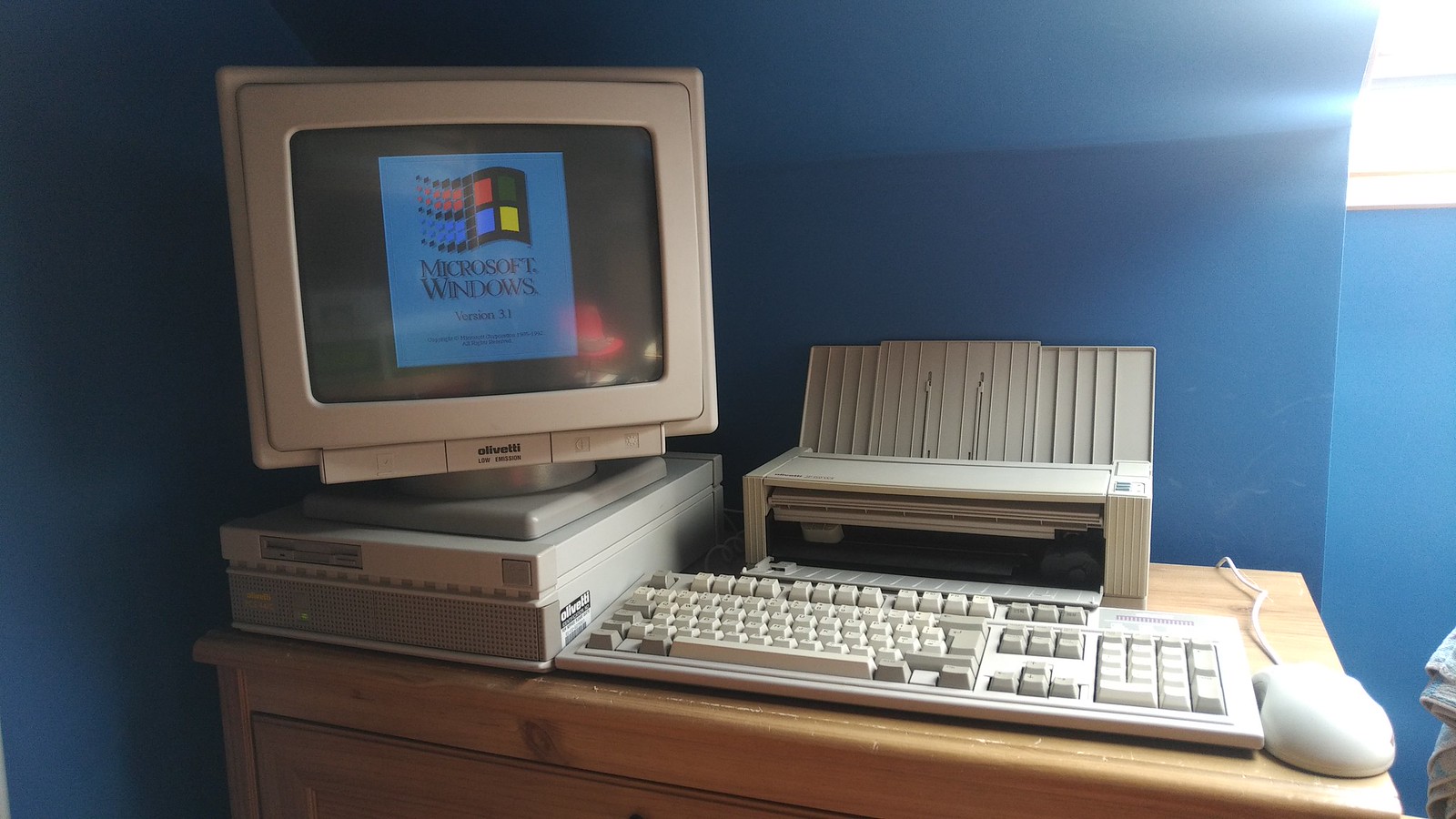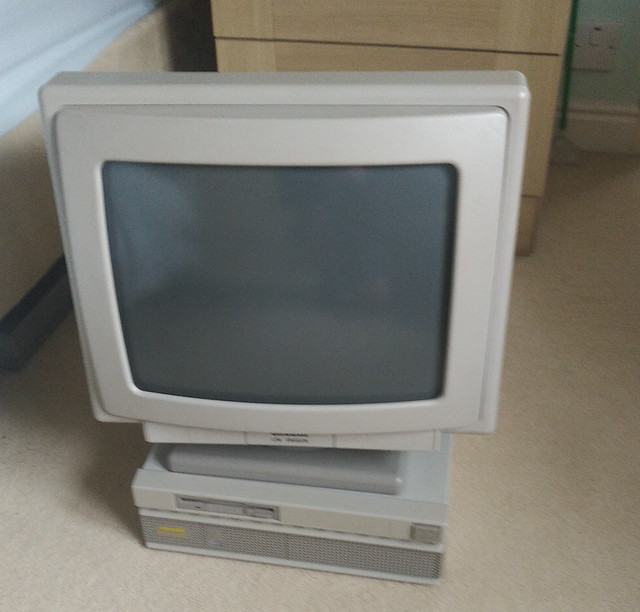First post, by Aaron75
Hi all, joined the forum in 2020 but only posting now due to some new found interest in an old project. Feel free to correct me if i'm in the wrong section.
In mid 2020 i bought an Olivetti PCS44/c 486 PC , which included a matching CRT, keyboard and printer, and have since bought a matching Olivetti branded mouse to complete the setup. I got the system working after soldering a new battery holder to the board, which allowed me to get into the CMOS setup utility and change some HDD related settings so that it could boot. It has the factory installation of Windows 3.1 still loaded on the system, which interestingly was registered to the Thorn EMI electronics company no less. Like a few older laptops I've had the setup utility runs from the HDD rather than an on-board ROM chip, so i'll stick with the original HDD for now to save messing around with recovery disks.
Currently the specs are as follows:
Intel i486 SX running at 25MHz
128mb HDD
640kb base memory
3072kb extended memory
384kb dedicated memory
4096kb total memory (All of which is built into the board, with just one singular slot for expansion)
As far as I can tell it dates from around 1994, which makes the PCS44/c a rather mid-range but respectable PC of the time.
My aim for this PC is to make some period upgrades so that it can handle some light DOS gaming (as it can barely run the flying windows screensaver at the moment!). Since I usually only mess around with 98/XP era retro machines the 486 environment is totally new to me, so I hope that i can seek some upgrade advice.
Sound
The PC doesn't have any onboard sound or sound card from the factory, so my this is one of my top priorities. I had a Sound Blaster Vibra 16 on hand, but shortly after digging it out i noticed some leaking capacitors, so I went on eBay and got a Crystal CX4235 ISA sound card instead. Ifollowed the installation steps from Phil's computer lab's video on this card (https://www.youtube.com/watch?v=3-UdeiE2bVY&list=WL&index=21) and successfully initialised the card as instructed. However, i'm not sure how to make it work in Windows 3.1, so any advice on this would be appreciated.
Memory
I plan to populate the single empty RAM slot to increase the memory, although i'm not sure what kind of stick I'm looking for. I believe it to be called SIMM RAM, and if so, will any capacity work or will my board be restricted to a certain amount?
Graphics
The PC currently has onboard graphics, so I'm wondering if it's possible for me to install a better card in the ISA slot to increase performance. Any eBay recommendations on a suitable, low cost card?
An extra CPU
The current 486SX processor is soldered to the board, but i noticed another socket on the board which looks like another CPU socket. Am I right in saying I can put an upgraded processor in this socket alongside the existing one, or is it for something different? Pics of board attached.
In terms of storage, I don't plan to add a CD ROM or CF card adaptor just yet due to the on-HDD BIOS setup playing havoc when I attempted this previously. I would add another IDE controller, but unfortunately it looks like i'm all out of ISA slots now. I would also like to try some basic networking, but again any hardware i do use will have to be external due to the slots being fully populated
Attached is photos of the PC and motherboard.
Any advice would be very much appreciated!
Thanks in advance,
Aaron



